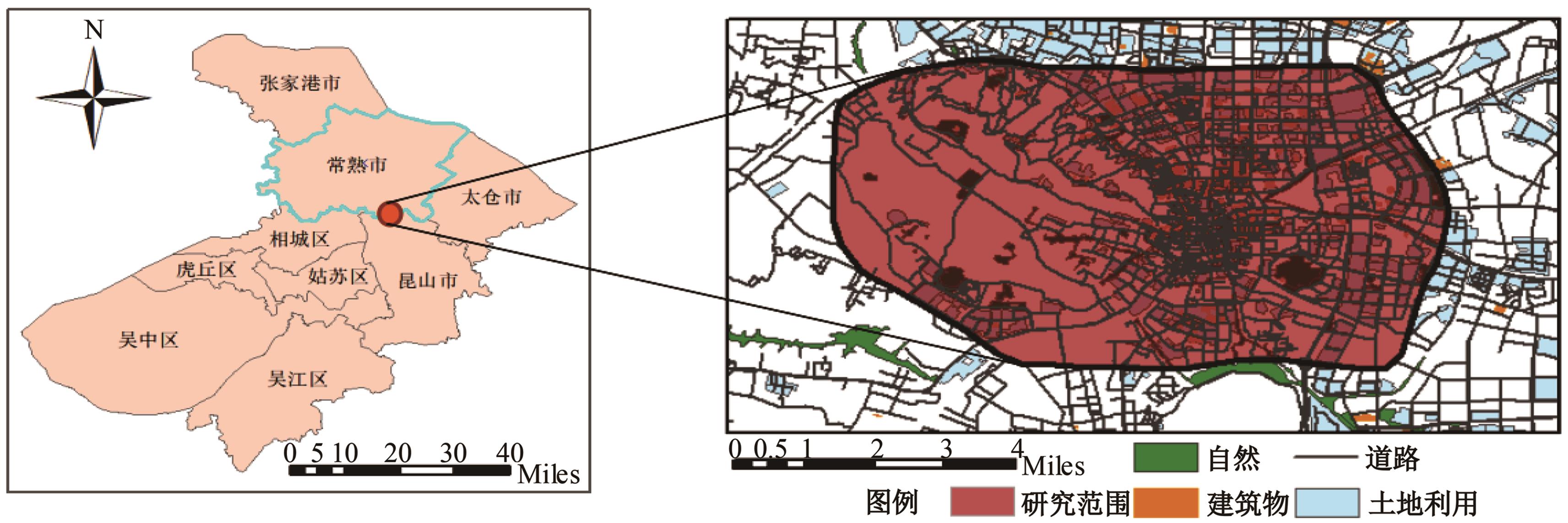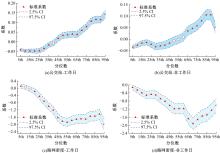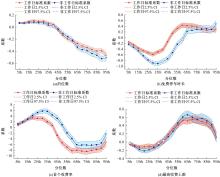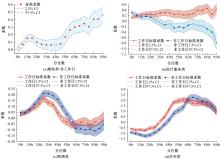吉林大学学报(工学版) ›› 2024, Vol. 54 ›› Issue (9): 2520-2530.doi: 10.13229/j.cnki.jdxbgxb.20221460
• 交通运输工程·土木工程 • 上一篇
建成环境对路内停车泊位使用率的非线性影响模型
周锡浈1,2( ),宫贺3,李敦敦4,季彦婕1,2(
),宫贺3,李敦敦4,季彦婕1,2( ),严杰1,2
),严杰1,2
- 1.东南大学 交通学院,南京 211189
2.东南大学 现代城市交通技术江苏高校协同创新中心,南京 210096
3.常熟市公安局 交通警察大队,江苏 常熟 215505
4.江南爱停车科技有限公司,江苏 常熟 215500
Nonlinear model for impact of built environment on curb parking spaces occupancy
Xi-zhen ZHOU1,2( ),He GONG3,Dun-dun LI4,Yan-jie JI1,2(
),He GONG3,Dun-dun LI4,Yan-jie JI1,2( ),Jie YAN1,2
),Jie YAN1,2
- 1.School of Transportation,Southeast University,Nanjing 211189,China
2.Jiangsu Province Collaborative Innovation Center of Modern Urban Traffic Technologies,Southeast University,Nanjing 210096,China
3.Public Security Bureau of Changshu,Traffic Police Brigade,Changshu 215505,China
4.Genland Ipark Technology Co. ,Ltd. ,Changshu 215500,China
摘要:
为精细化把握微观空间尺度下的路内停车需求规律,针对工作日和非工作日两种典型场景,分别构建了分位数回归模型,揭示了土地利用、停车站点属性、交通因素、社会人口和经济对路内停车泊位使用率的非线性影响。研究结果表明:分位数回归模型捕捉研究变量间复杂关系的性能显著优于传统线性回归模型;解释变量的回归系数和显著性水平随着分位数的变化而变化,且工作日和非工作日存在明显异质性。例如,停车站点周边公交站的数量与低、高泊位使用率密切相关,而该变量在中等泊位使用率下无统计学意义;工作日餐饮类兴趣点对路内停车泊位使用率的影响并不显著。
中图分类号:
- U491.1
| 1 | Mannini L, Cipriani E, Crisalli U, et al. On-street parking search time estimation using FCD data[J]. Transportation Research Procedia, 2017, 27: 929-936. |
| 2 | Arnott R, Williams P. Cruising for parking around a circle[J]. Transportation Research Part B: Methodological,2017, 104: 357-375. |
| 3 | Liu W, Zhang F, Yang H. Modeling and managing the joint equilibrium of destination and parking choices under hybrid supply of curbside and shared parking[J]. Transportation Research Part C: Emerging Technologies,2021, 130: No.103301. |
| 4 | Lam W H, Holyoak N M, Lo H P. How park-and-ride schemes can be successful in Eastern Asia[J]. Journal of Urban Planning and Development,2001, 127(2): 63-78. |
| 5 | Liu W, Geroliminis N. Doubly dynamics for multi-modal networks with park-and-ride and adaptive pricing[J]. Transportation Research Part B: Methodological,2017, 102: 162-179. |
| 6 | Zheng N, Geroliminis N. Modeling and optimization of multimodal urban networks with limited parking and dynamic pricing[J]. Transportation Research Part B: Methodological,2016, 83: 36-58. |
| 7 | Wang J, Wang H, Zhang X. A hybrid management scheme with parking pricing and parking permit for a many-to-one park and ride network[J]. Transportation Research Part C: Emerging Technologies,2020, 112: 153-179. |
| 8 | Chen Z, Spana S, Yin Y, et al. An advanced parking navigation system for downtown parking[J]. Networks and Spatial Economics, 2019, 19(3): 953-968. |
| 9 | 张文会,孙舒蕊,于秋影,等. 考虑供需平衡的路内停车布局研究[J]. 森林工程, 2020, 36: 91-96, 102. |
| Zhang Wen-hui, Sun Shu-rui, Yu Qiu-ying, et al. Study on the layout of in-road parking considering the balance between supply and demand[J] Forest Engineering,2020, 36: 91-96, 102. | |
| 10 | 张戎,诸立超,林佳妮. 城市中心区路内停车累进计费定价模型[J]. 同济大学学报:自然科学版, 2015, 43(1):90-95, 120. |
| Zhang Rong, Zhu Li-chao, Lin Jia-ni. Curb parking progressive charging pricing model of city center[J] Journal of Tongji University(Natural Science), 2015, 43(1):90-95, 120. | |
| 11 | 刘健斌. 路内停车选择和泊车行为分析与建模[D]. 长春: 吉林大学交通学院, 2022. |
| Liu Jian-bin. Analysis and modeling of on-street parking choice and parking behavior[D]. Changchun: School of Transportation of Jilin University, 2022. | |
| 12 | 彭程. 深圳南山区路内停车设施利用特征与影响因素研究[D]. 哈尔滨: 哈尔滨工业大学建筑学院, 2021. |
| Peng Cheng. Research on the utilization characteristics and influence factors of on-street parking in Nanshan district of Shenzhen[D]. Harbin: School of Architecture of Harbin University of Industry, 2021. | |
| 13 | 尹超英, 邵春福, 王晓全, 等. 考虑停车可用性的建成环境对小汽车通勤出行的影响[J]. 吉林大学学报:工学版,2019, 49(3): 714-719. |
| Yin Chao-ying, Shao Chun-fu, Wang Xiao-quan. Influence of urban built environment on car commuting considering parking availability[J]. Journal of Jilin University (Engineering and Technology Edition), 2019, 49(3): 714-719. | |
| 14 | Guo Z, Mcdonnell S. Curb parking pricing for local residents: an exploration in New York City based on willingness to pay[J]. Transport Policy, 2013, 30: 186-198. |
| 15 | Bianco M J. Effective transportation demand management: combining parking pricing, transit incentives, and transportation management in a commercial district of Portland, Oregon[J]. Transportation Research Record, 2000, 1711(1): 46-54. |
| 16 | Brooke S, Ison S, Quddus M. On-street parking search: review and future research direction[J]. Transportation Research Record, 2014, 2469(1): 65-75. |
| 17 | Ibeas A, Dell'Olio L, Bordagaray M, et al. Modelling parking choices considering user heterogeneity[J]. Transportation Research Part A: Policy and Practice, 2014, 70: 41-49. |
| 18 | Ottomanelli M, Dell'Orco M, Sassanelli D. Modelling parking choice behaviour using possibility theory[J]. Transportation Planning and Technology,2011, 34(7): 647-667. |
| 19 | Axhausen K W, Polak J W. Choice of parking: stated preference approach[J]. Transportation,1991, 18(1): 59-81. |
| 20 | Piccioni C, Valtorta M, Musso A. Investigating effectiveness of on-street parking pricing schemes in urban areas: an empirical study in Rome[J]. Transport Policy,2019, 80: 136-147. |
| 21 | Hunt J D, Teply S. A nested logit model of parking location choice[J]. Transportation Research Part B: Methodologica,1993, 27(4): 253-265. |
| 22 | Bi H, Ye Z, Zhu H. Examining the nonlinear impacts of built environment on ridesourcing usage: focus on the critical urban sub-regions[J]. Journal of Cleaner Production, 2022, 350: No.131314. |
| 23 | Zhao G W, Li Z T, Shang Y Z, et al. How does the urban built environment affect online car-hailing ridership intensity among different scales?[J]. International Journal of Environmental Research and Public Health,2022, 19(9): No.5325. |
| 24 | Chen C, Feng T, Ding C, et al. Examining the spatial-temporal relationship between urban built environment and taxi ridership: results of a semi-parametric GWPR model[J]. Journal of Transport Geography, 2021, 96:No. 103172. |
| 25 | Wang L, Zhao C, Liu X, et al. Non-linear effects of the built environment and social environment on bus use among older adults in china: an application of the xgboost model[J]. International Journal of Environmental Research and Public Health, 2021, 18(18):9592. |
| 26 | 刘柯良,陈坚,祝烨,等. 社区建成环境对小汽车使用行为的非线性影响模型[J]. 北京交通大学学报, 2022, 46(3): 49-56. |
| Liu Ke-liang, Chen Jian, Zhu Ye, et al. Non-linear impact model of community built environment on car usage behavior[J] Journal of Beijing Jiaotong University,2022, 46(3): 49-56. | |
| 27 | 刘柯良,彭涛,陈坚,等. 建成环境对居住区配建停车场利用率影响模型研究[J]. 公路与汽运, 2021, 205(4): 31-35. |
| Liu Ke-liang, Peng Tao, Chen Jian, et al. Research on the model of the built environment's influence on the utilization of parking lot in residential area[J]. Highways & Automotive Applications, 2021, 205(4): 31-35. | |
| 28 | 陈坚,刘柯良,邸晶,等. 建成环境对城市停车需求影响的非线性模型[J]. 交通运输系统工程与信息, 2021, 21(4): 197-203. |
| Chen Jian, Liu Ke-liang, Di Jing, et al. Nonlinear model of impact of built environment on urban parking demand[J]. Journal of Transportation Systems Engineering,2021, 21(4): 197-203. | |
| 29 | Cervero R. Built environments and mode choice: toward a normative framework[J]. Transportation Research Part D: Transport and Environment, 2002, 7(4): 265-284. |
| 30 | 傅志妍,彭涛,陈坚,等. 建成环境视角下出行者停车选择意愿模型[J]. 昆明理工大学学报:自然科学版, 2022,48(1): 142-150. |
| Fu Zhi-yan, Peng Tao, Chen Jian, et al. The model of travelers'parking choice intention from the perspective of built environment[J]. Journal of Kunming University of Science and Technology(Natural Science),2022,48(1): 142-150. | |
| 31 | Gan Z, Yang M, Feng T, et al. Examining the relationship between built environment and metro ridership at station-to-station level[J]. Transportation Research Part D: Transport and Environment, 2020, 82: No.102332. |
| 32 | Ma W, Vatsa P, Owusu-Sekyere E, et al. Does income diversity really stimulate household consumption expenditure diversity? Evidence from mean-based and unconditional quantile regressions[J]. Applied Economics, 2022: No.2159012. |
| 33 | Evkaya O, Yilmaz B, Haliloğlu E Y,et al. Sectoral electricity consumption modeling with D-vine quantile regression: the US electricity market case[J]. Energy Sources, Part B: Economics, Planning, and Policy, 2023, 18(1): No.2160523. |
| 34 | Cheng L, Wang K, De Vos J, et al. Exploring non-linear built environment effects on the integration of free-floating bike-share and urban rail transport: a quantile regression approach[J]. Transportation Research Part A: Policy and Practice, 2022, 162: 175-187. |
| [1] | 曲昭伟,李霖,陈永恒,吴场建. 长区间掉头车辆特性分析及其安全评价[J]. 吉林大学学报(工学版), 2024, 54(8): 2206-2213. |
| [2] | 何永明,权聪,魏堃,冯佳,万亚楠,陈世升. 超高速公路车路协同路侧单元感知融合方法[J]. 吉林大学学报(工学版), 2024, 54(7): 1923-1934. |
| [3] | 程国柱,盛林,王浩宇,冯天军. 考虑右转车二次冲突的信号交叉口行人过街安全评价方法[J]. 吉林大学学报(工学版), 2024, 54(7): 1903-1912. |
| [4] | 秦雅琴,钱正富,谢济铭. 协同换道避障模型和轨迹数据驱动的车辆协同避障策略[J]. 吉林大学学报(工学版), 2024, 54(5): 1311-1322. |
| [5] | 张明业,杨敏,黎彧,黄世玉,李清韵. 考虑有序充电策略的多车型电动公交调度优化[J]. 吉林大学学报(工学版), 2024, 54(5): 1293-1301. |
| [6] | 马潇驰,陆建. 基于基因表达式编程的高架道路事故实时预测[J]. 吉林大学学报(工学版), 2024, 54(3): 719-726. |
| [7] | 严利鑫,冯进培,郭军华,龚毅轲. 不同险态情景下共驾型智能车辆接管行为特征分析[J]. 吉林大学学报(工学版), 2024, 54(3): 683-691. |
| [8] | 曲大义,张可琨,顾原,王韬,宋慧,戴守晨. 自动驾驶车辆换道决策行为分析及分子动力学建模[J]. 吉林大学学报(工学版), 2024, 54(3): 700-710. |
| [9] | 涂辉招,王万锦,乔鹏,郭静秋,鹿畅,吴海飞. 自动驾驶卡车路测安全员接管干预行为解析[J]. 吉林大学学报(工学版), 2024, 54(3): 727-740. |
| [10] | 张健,李青扬,李丹,姜夏,雷艳红,季亚平. 基于深度强化学习的自动驾驶车辆专用道汇入引导[J]. 吉林大学学报(工学版), 2023, 53(9): 2508-2518. |
| [11] | 郑植,袁佩,金轩慧,魏思斯,耿波. 桥墩复合材料柔性防撞护舷试验[J]. 吉林大学学报(工学版), 2023, 53(9): 2581-2590. |
| [12] | 李建华,王泽鼎. 考虑路径耗时的城市汽车分布式充电桩选点规划[J]. 吉林大学学报(工学版), 2023, 53(8): 2298-2303. |
| [13] | 李洪涛,王琳虹,李俊达. 公路交叉口照明和限速对视觉搜索能力的影响[J]. 吉林大学学报(工学版), 2023, 53(8): 2287-2297. |
| [14] | 巫威眺,曾坤,周伟,李鹏,靳文舟. 基于多源数据和响应面优化的公交客流预测深度学习方法[J]. 吉林大学学报(工学版), 2023, 53(7): 2001-2015. |
| [15] | 程国柱,盛林,赵浩,冯天军. 基于危险度分析的信号交叉口专用相位设置条件[J]. 吉林大学学报(工学版), 2023, 53(7): 1962-1969. |
|
||







